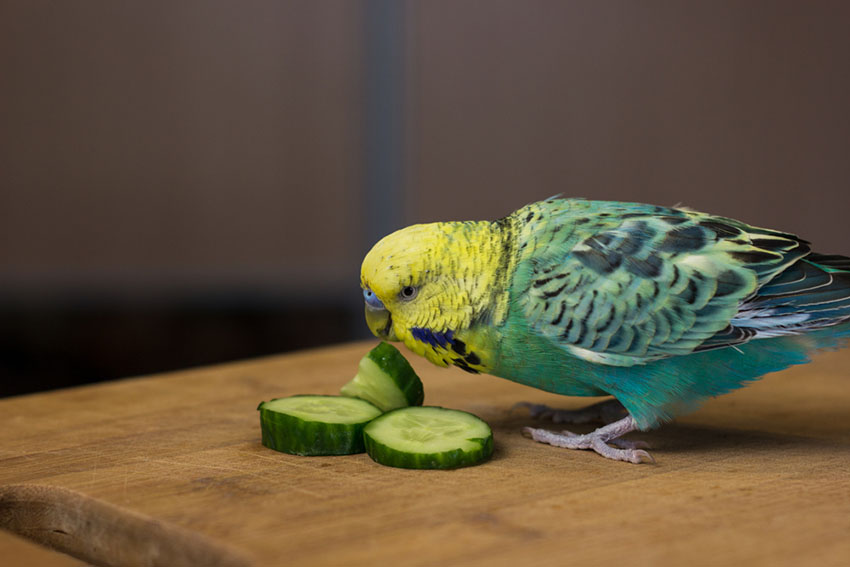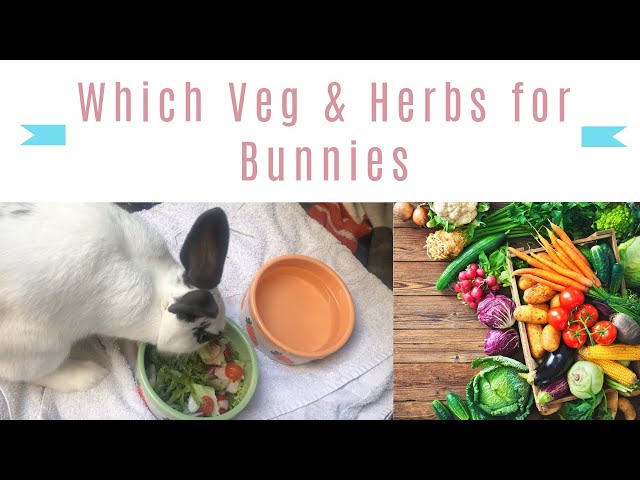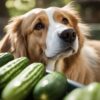Key Takeaways
Rabbits should have 1-2 cups of leafy greens daily for a 4-pound rabbit.
Some vegetables, like broccoli and cauliflower, should be avoided due to gas production.
Herbs like basil, oregano, and mint are excellent for rabbits and can be grown in pots.
Birds benefit from fresh vegetables like spinach, sprouts, and carrots.
Use nontoxic fertilizers and avoid chemical pesticides to keep your pets safe.
Pet-Friendly Vegetable Gardens
One of the great joys of having pets like rabbits and birds is being able to provide them with fresh, homegrown vegetables. Not only does this ensure that your pets are eating the healthiest food possible, but it also gives you the satisfaction of knowing exactly where their food comes from.
“Feeding Parakeets Fresh Food | Parakeet …” from www.omlet.us and used with no modifications.
The Importance of Safe and Nutritious Vegetables for Pets
Rabbits and birds have delicate digestive systems that require careful attention. Providing them with safe, nutritious vegetables is crucial for their overall health and well-being. Vegetables are rich in essential vitamins, minerals, and antioxidants that support their immune system and digestive health.
However, not all vegetables are safe for rabbits and birds. Some can cause digestive issues or even be toxic. Therefore, it’s essential to know which vegetables are safe and how to introduce them into your pets’ diets gradually.
Identifying Safe Vegetables for Rabbits and Birds
When selecting vegetables for your rabbits and birds, it’s essential to choose those that are safe and beneficial for their health. Here’s a breakdown of the best options:
Leafy Greens
Leafy greens are a staple in the diet of both rabbits and birds. They are rich in vitamins and minerals, making them an excellent choice for daily consumption. For more information on keeping your pets safe, check out this article on non-toxic plants for pets.
Spinach
Kale
Romaine lettuce
Arugula
Swiss chard
Always start with small amounts and gradually increase the quantity to ensure your pet’s digestive system can handle the new food.
Root Vegetables
Root vegetables can be a tasty and nutritious addition to your pets’ diet, but they should be given in moderation.
Carrots
Beets
Parsnips
Radishes
These vegetables are high in sugar and should be treated as occasional treats rather than daily staples.
Herbs
Herbs are not only easy to grow but also provide a variety of flavors and nutrients for your pets. Some excellent options include:
Basil
Oregano
Mint
Parsley
Cilantro
Herbs like mint can spread quickly, so it’s best to grow them in pots to control their growth.
Fruits (in Moderation)
While fruits can be a delicious treat for rabbits and birds, they should be given sparingly due to their high sugar content.
Strawberries
Blueberries
Apples (without seeds)
Pears
Introduce fruits slowly and in small quantities to avoid digestive issues.
“Which Veggies & Herbs Can Bunnies Eat …” from www.youtube.com and used with no modifications.
Planning Your Pet-Friendly Garden
Creating a garden that caters to your pets’ needs involves careful planning. Here are some essential steps to consider, including growing chicory in pet-friendly container gardens to ensure a safe and nutritious environment.
Choosing the Right Location
Select a location that receives plenty of sunlight, as most vegetables require at least 6 hours of direct sunlight daily. Ensure the area is accessible for regular watering and maintenance.
Deciding on Containers vs. Ground Planting
Decide whether you want to grow your vegetables in containers or directly in the ground. Container gardening is ideal for small spaces and allows for better control over soil quality and pests. Ground planting is suitable for larger gardens and provides more space for your plants to grow.
Selecting Pet-Friendly Soil and Fertilizers
Use organic soil and fertilizers to ensure your garden is free from harmful chemicals. Look for products labeled as pet-safe to avoid any potential risks to your rabbits and birds.
By following these guidelines, you can create a thriving garden that provides your pets with fresh, nutritious vegetables all year round. For instance, you might consider growing chicory in pet-friendly container gardens.
Deciding on Containers vs. Ground Planting
Deciding between containers and ground planting depends on your available space and gardening goals. Containers are perfect for those with limited space, such as balconies or small patios. They offer better control over soil quality and make it easier to manage pests. On the other hand, ground planting is ideal for larger gardens and allows plants to grow more extensively, benefiting from natural soil ecosystems.
Selecting Pet-Friendly Soil and Fertilizers
When it comes to soil, always opt for organic options free from harmful chemicals. Pet-friendly fertilizers are crucial to ensure your garden remains a safe haven for your rabbits and birds. Look for organic fertilizers labeled as pet-safe, avoiding those with synthetic chemicals that could harm your pets if ingested.
Planting Your Vegetables
Planting your vegetables correctly sets the foundation for a thriving garden. Each type of vegetable has specific planting requirements that you should follow for optimal growth. Let’s break down the process for leafy greens, root vegetables, and herbs.
Tips for Leafy Greens
Leafy greens like spinach, kale, and romaine lettuce are relatively easy to grow. They thrive in cool weather, so it’s best to plant them in early spring or late summer. Make sure to space the seeds about 6 inches apart and plant them in well-drained soil. Water them regularly to keep the soil moist but not waterlogged. For more information on safe gardening practices, check out this guide on non-toxic plants for pets.
Root Vegetable Planting
Root vegetables such as carrots, beets, and radishes require loose, well-drained soil to grow properly. Before planting, loosen the soil to a depth of at least 12 inches to allow the roots to expand. Plant the seeds about 1 inch apart and thin them out as they grow to prevent overcrowding.
Herb Planting Techniques
Herbs like basil, oregano, and mint are great for container gardening. Plant them in pots with well-drained soil and place them in a sunny location. Mint, in particular, can spread rapidly, so growing it in a pot helps contain its growth. Regularly trim the herbs to encourage bushier growth and prevent them from becoming leggy.
Maintaining a Healthy Garden
Maintaining your garden involves regular care to ensure your plants remain healthy and productive. Key aspects include proper watering, pest control, and ensuring adequate sunlight.
Watering Schedules
Watering is essential for plant health, but it’s crucial to get the balance right. Overwatering can lead to root rot, while underwatering can cause plants to wilt and die. Most vegetables need about 1 inch of water per week. Water your garden early in the morning to minimize evaporation and allow the plants to absorb moisture throughout the day.
Nontoxic Weed and Pest Control
Weeds and pests can quickly take over your garden if not managed properly. Use nontoxic methods to control weeds, such as mulching and hand-pulling. For pest control, consider using natural remedies like neem oil or introducing beneficial insects like ladybugs to keep harmful pests in check.
Ensuring Proper Sunlight
Sunlight is vital for photosynthesis, the process by which plants produce energy. Most vegetables require at least 6 hours of direct sunlight daily. Monitor your garden’s sunlight exposure and adjust the positioning of your plants if necessary to ensure they receive adequate light. For more information on what vegetables to grow for your pets, check out this guide.
Harvesting Your Pet-Friendly Vegetables
Knowing when and how to harvest your vegetables is crucial to providing your pets with the freshest and most nutritious produce. Different types of vegetables have specific harvesting guidelines.
Harvesting Leafy Greens
Leafy greens can be harvested once the leaves are large enough to eat. Use scissors to cut the outer leaves, leaving the inner leaves to continue growing. This method, known as “cut and come again,” allows you to enjoy a continuous supply of fresh greens.
Harvesting Root Vegetables
Root vegetables are ready to harvest when they reach their mature size, usually indicated on the seed packet. Gently pull the vegetables from the soil, taking care not to damage the roots. Brush off any excess soil and store them in a cool, dry place. For more tips on growing pet-friendly plants, check out this guide on growing chicory in pet-friendly container gardens.
Harvesting Herbs
Herbs can be harvested once they have enough foliage to support continued growth. Use scissors to trim the stems, cutting just above a leaf node to encourage new growth. Regular harvesting helps keep the plants bushy and productive. For more tips, check out this guide on growing chicory in pet-friendly gardens.
Feeding Your Homegrown Greens to Your Pets
Feeding your pets homegrown vegetables is a rewarding experience. However, it’s essential to follow proper guidelines to ensure their safety and health.
Serving Sizes for Rabbits
Rabbits should have a diet primarily composed of hay, with vegetables making up a smaller portion. For a 4-pound rabbit, provide 1 to 2 cups of leafy greens daily. Non-leafy vegetables should be limited to 1 to 2 tablespoons daily, and fruits should be given sparingly, no more than 1 teaspoon daily.
Serving Sizes for Birds
Birds also benefit from a varied diet that includes fresh vegetables. However, the serving sizes should be carefully monitored to prevent overfeeding. For small birds like parakeets, a few small pieces of vegetables daily are sufficient. Larger birds, such as parrots, can handle more substantial portions.
Introduce vegetables gradually and observe how your bird reacts. Start with a small piece and increase the amount over time. Monitor your bird’s droppings and overall health to ensure they are tolerating the new food well.
Introducing New Vegetables Safely
Introducing new vegetables to your pets should be done slowly to avoid digestive issues. Start with a small amount and gradually increase the quantity over several days. This allows their digestive systems to adjust and reduces the risk of gastrointestinal problems.
Watch for any signs of discomfort, such as diarrhea or decreased appetite. If any adverse reactions occur, stop feeding the new vegetable and consult your veterinarian.
Conclusion
Growing your own vegetables for your rabbits and birds is a rewarding and beneficial practice. It ensures that your pets receive the freshest, most nutritious food possible while also giving you the satisfaction of knowing exactly what they are eating.
By following the guidelines outlined in this article, you can create a thriving garden that caters to your pets’ dietary needs. From selecting the right vegetables to planting, maintaining, and harvesting, every step is crucial to ensuring the health and happiness of your furry and feathered friends.
Remember, a well-balanced diet is key to your pets’ overall well-being. Providing them with a variety of safe and nutritious vegetables will help them thrive and enjoy a long, healthy life. For instance, rosemary is not toxic to dogs or cats, making it a safe addition to their diet.
Benefits of Growing Your Own Vegetables
Growing your own vegetables offers numerous benefits for both you and your pets. It ensures that the food is free from harmful chemicals and pesticides, making it safer for your pets to consume. Additionally, it allows you to control the quality and freshness of the vegetables, providing the best possible nutrition for your pets.
Encouraging Healthy Dietary Habits
Providing fresh, homegrown vegetables encourages healthy eating habits in your pets. It helps them develop a taste for natural, wholesome foods and reduces their reliance on processed pet foods. This can lead to improved overall health, better digestion, and increased energy levels.
By involving your pets in the gardening process, you also create an enriching and stimulating environment for them. Watching and interacting with the growing plants can provide mental stimulation and promote natural foraging behaviors.
Frequently Asked Questions
Here are some common questions about growing vegetables for rabbits and birds, along with detailed answers to help you provide the best care for your pets:
What vegetables are absolutely safe for rabbits and birds?
Some vegetables are universally safe and beneficial for both rabbits and birds. These include leafy greens like spinach, kale, and romaine lettuce, as well as root vegetables like carrots and beets. Herbs such as basil, oregano, and mint are also excellent choices. Additionally, it’s important to know that Texas sage is not toxic to pets, making it a safe option for your garden.
Always introduce new vegetables gradually and monitor your pets for any signs of digestive upset or allergic reactions.
What pet-safe fertilizers can I use in my pet-friendly garden?
When selecting fertilizers for your garden, opt for organic and pet-safe options. Compost, aged manure, and worm castings are excellent natural fertilizers that provide essential nutrients without harmful chemicals. Look for products labeled as pet-safe and avoid those containing synthetic chemicals or pesticides.
How should I introduce a new vegetable to my pet rabbit or bird?
Introduce new vegetables slowly and in small amounts. Start with a tiny piece and gradually increase the quantity over several days. This allows your pet’s digestive system to adjust and reduces the risk of gastrointestinal issues.
Monitor your pet for any signs of discomfort, such as diarrhea or decreased appetite. If any adverse reactions occur, stop feeding the new vegetable and consult your veterinarian. For more information on pet-safe plants, you can read about Texas sage and its benefits.
What should I do if my pet has a reaction to a new vegetable?
If your pet shows signs of a negative reaction to a new vegetable, such as diarrhea, lethargy, or loss of appetite, stop feeding the vegetable immediately. Provide plenty of fresh water and monitor your pet closely. If the symptoms persist or worsen, contact your veterinarian for advice and treatment.







